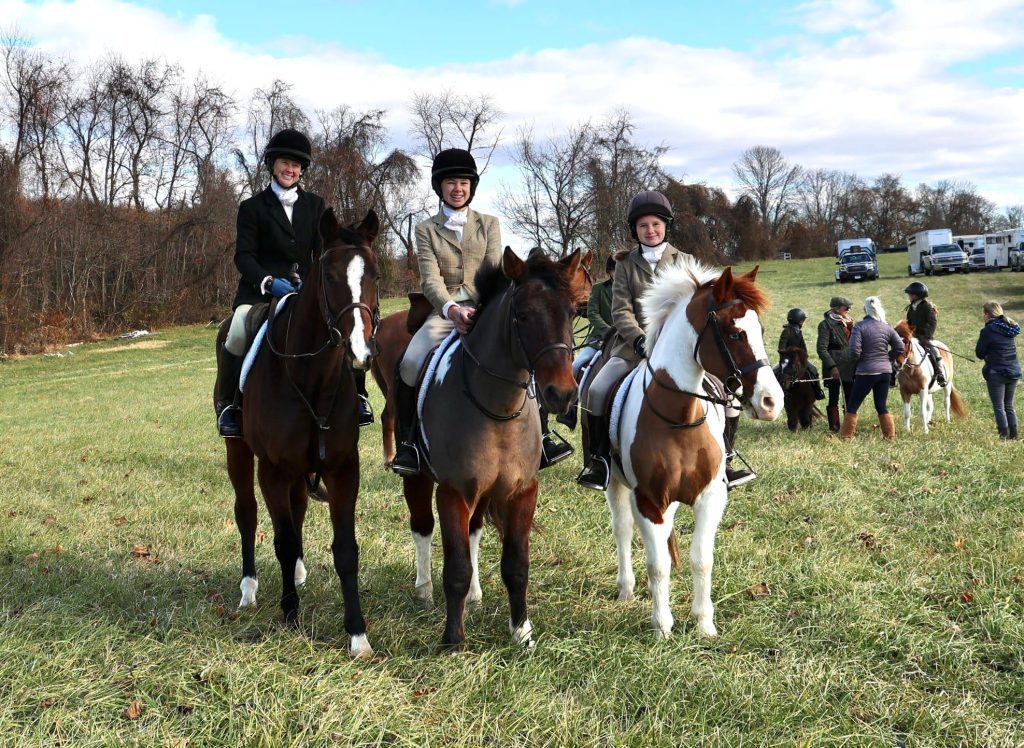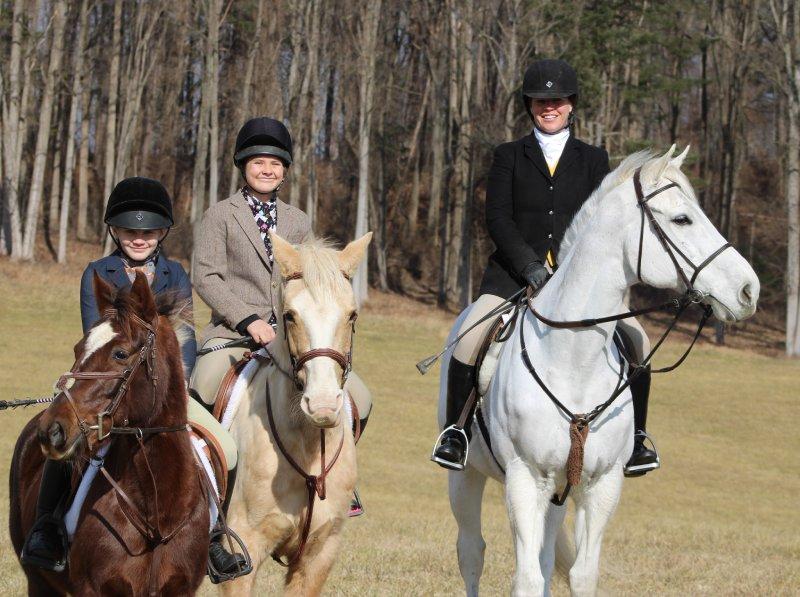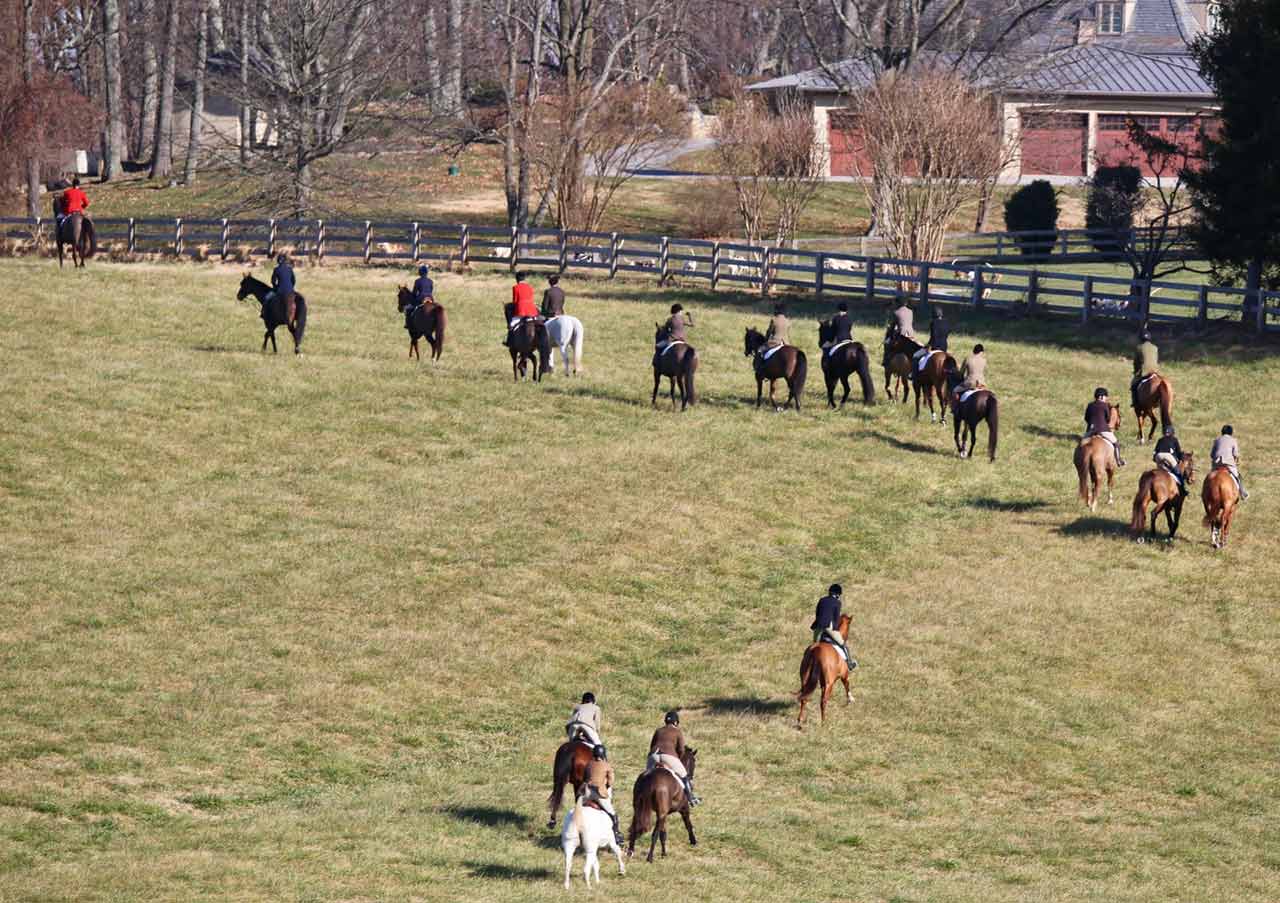
Main Menu
Menu


“Proper hunting attire is rigidly conventional for two reasons. First, over the years that people have been hunting, a form of clothing has been developed that comes closest to the most practical under the average conditions of weather and terrain encountered in the hunt field. Second, some of the pleasure derived by those who hunt, and much of the pleasure derived by those who watch (especially landowners) comes from the feeling of tradition and from the spectacle of people properly and conventionally dressed for the event.”
– William Wadsworth, Riding to Hounds in America
If unsure, check with a member to learn what is appropriate and expected during a hunt.

During the regular hunting season, beginning with Opening Meet, formal dress is required on Saturdays, holidays, and Joint Meets. During the week, a ratcatcher is permitted.
Hunting attire for members of the field is as follows:













Different hunts have differing standards of turnout for Juniors. The attire below is the correct turnout for Green Spring:
Rule #1 Tack and Clothing should be well fitting, clean, and neat.
Rule #2 Check with a hunt member to learn what is appropriate and expected.
Juniors should be turned out in “ratcatcher” (informal attire) until they are 16. After 16, adult rules of turnout apply.
In addition to the above turnout, all members should wear white saddle pads and plain black or white boots on their mounts. Colored boots, browbands, and saddle pads are not appropriate.
The Hunt’s rules focus on common-sense and polite attitudes—usually broken through ignorance or lack of courtesy. The hounds, landowners, staff, fellow riders and horses are given primary consideration.

| 1- Try to arrive at the meet at least fifteen minutes early. |
| 2- Never ride through coverts to the meet—disturbed concerts will not hold foxes. |
| 3- Never do anything that might harm a hound. |
| 4- Don’t jump a fence before all hounds are clear. |
| 5- Avoid kicking passing hounds by turning your horse's head toward them. |
| 6- Never damage a landowner's property or allow his livestock to escape. |
| 7- If you knock a rail down and the livestock is in the field, or the fence can’t be fixed, you should wait for help to arrive. |
| 8- The hunt has permission to ride over certain terrain, but you, as an individual, do not. Respect this rule and only ride over terrain with the landowners' permission. |
| 9- Stay to the edges of fields ("headlands") and avoid unharvested crops and seeded ground. Always follow the field master, preventing overrunning the scent or damaging property. |
| 10- Stay two to three lengths behind the field master. |
| 11- "Staff Please"—yield the right-of-way to the huntsman or whipper-in. Keep your horse's head to the passerby and back off the path until the staff member has passed. |
| 12- "Back" or "Reverse Please"—each field member must back off the path. Allow hounds, staff, and those behind you to pass. |
| 13- When a warning ("'ware wire" or "ware hole", etc.) is passed back, it should only be said to the next ride. Watch for the hazard, and as you pass, pass the warning down and point to the hazard. |
| 14- Conversation while hunting should be limited and softly spoken. |
| 15- "Hold Hard" (signaled by a vertically raised forearm); stop where you are, stand still and be quiet. Raise your arm while stopping to alert riders behind you. |
| 16- Don’t crowd the horse ahead of you; it may result in a kick. a) Horses known to kick on provocation must wear a red ribbon on their tails. b) A rider with his arm held horizontally behind his back warns you that his horse is annoyed and may kick. |
| 17- Keep up with the field master, and don’t cut corners.a) Horses known to kick on provocation must wear a red ribbon on their tails. b) A rider with his arm held horizontally behind his back warns you that his horse is annoyed and may kick. |
| 18- If you need to leave the field, ask permission from the field master. |
| 19- The last hunter is responsible for closing any open gate or raising any bar that may have been let down; the nearest hunter should wait and assist him. |
| 20- Riders having difficulty with their horses should stay to the rear. If your horse’s misbehavior interferes with or slows the rest of the field, ask permission to return to the stable. |
| 21- At jumps, jump in order and don’t cut in front of another rider. Jump abreast only when safe, and don’t swerve until clear. |
| 22- If your horse refuses to jump an obstacle, go directly to the rear before making another try. |
| 23- If you see the fox, stand still, face your horse in the fox’s direction and hold your hat in the air. a) If the hounds have checked or are silent and not hunting the line, try to get word to the huntsman; tell him where you last saw the fox b) If you can’t get the Huntsman, shout "tally-ho" two or three times while still pointing with your hat. c) Be sure the fox is well past you before you halloa, or you may head him. d) The huntsman decides whether your fox is the hunted fox. |
| 24- No smoking is not permitted while hunting. |